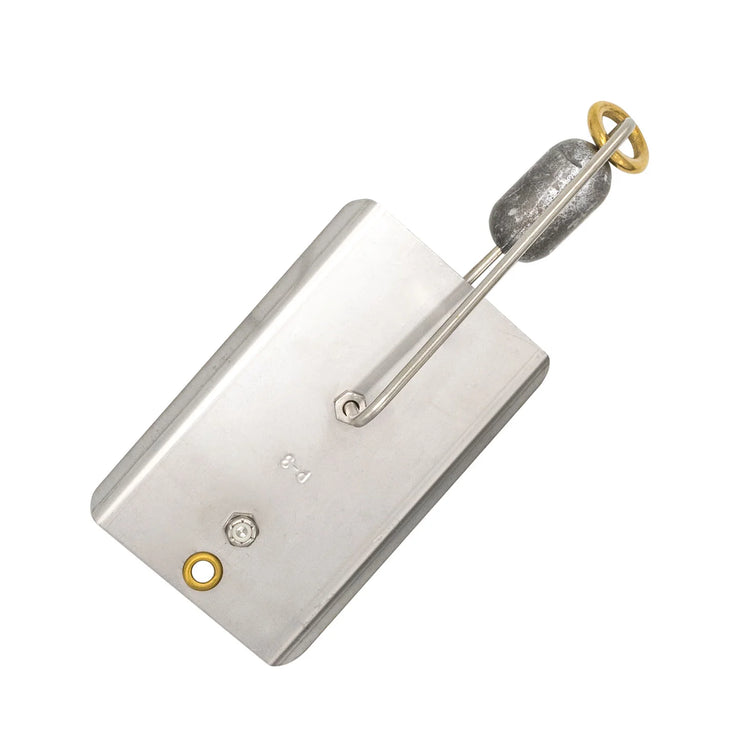
Downrigger vs. Planer: The Most Cost-Effective Way to Troll Down Deep
Downrigger vs. planer: which one should you use?
Well, it depends on a few things. It seems like every fishing forum has had a debate of downrigger vs. planer, with both having their pros and cons. But which one is the better option for your next trolling adventure…
And which one is the most cost effective?
What is a Downrigger?
Using a heavy metal weight and specialized “rod” system, a downrigger setup is used in trolling to place bait at a desired depth. This allows for more precise fishing and effective targeting of suspended fish schools, or fish that hunt below the surface. A downrigger can be especially effective when using your sounder to find fish, then deploying your baits to the exact depth. Downriggers for fishing allow a good mix of depth control and stability, although they can be very expensive and cumbersome.
Characteristics
A downrigger setup is larger than a planer and requires skill but can be deployed deeper than a planer. A downrigger rig has a metal cannonball that generally weighs between five and 25 pounds. It has a spool, weight, boom, rod holder and cable to control everything. An entire downrigger setup can cost upwards of $300 and comes with either manual and electric spools for weight deployment and retrieval. Downriggers allow for high-speed trolling with less tension on the rod.
Pros
- Downriggers can go deeper, 200 feet or more
- Downriggers put less pressure on the rod
- Provides more reliable depth control than a planer
- One of the most popular methods for HST
- Suitable for deep reef trolling for Grouper
Cons
- Far more expensive than a fishing planer
- Does not use the force of the water for depth control
- They are complex to use and set up
- It is often stationary and cumbersome
- Does not fit in a tackle box
What is a Planer?
A fishing planer is a specialized metal fishing tool that helps anglers target and catch fish that hunt below the surface. In the debate of downrigger vs. planer, planers are often cited as the more affordable option for anglers and work excellently during times when the fish swim a little higher in the water column, anywhere between 5 and 30 feet down.
Characteristics
Planers are smaller and lighter than a downriggers and act as a hydrofoil when deployed. They have a sliding metal ring that release tension on the line when a fish strikes. Planers are often used by connecting direct to the mainline or attached to a cleat on the transom with the mainline attached to the planer by rubber bands.
Planers also do not have a heavy lead sinker like a downrigger. Instead, the forward motion of the boat causes the hydrofoil shape of the planer to “push” down deep.
Pros
- Very affordable
- It works better when fish like wahoo swim a bit higher in the water column
- They are easy to use
- No special equipment needed. It uses water to force depth
- Different planer sizes mean different depths
- Fits in a tacklebox
- Can be run directly on your mainline
Cons
- Planer rods must be well separated to avoid tangles
- Generally only reaches about thirty feet in depth depending on planer size
- Ineffective during months when the fish are down very deep
- Tough to manage in rough seas
- Can be difficult to retrieve while boat is in motion
So, Downrigger Vs. Planer: Which One?
A downrigger for fishing and an ordinary fishing planer are effective for deep-sea trolling for different purposes. Both are effective getting your baits deeper to catch certain species of fish.
A good rule of thumb is to consider where you will be fishing and how. A downrigger will be your best option if cost is no issue, and you want to get your baits very deep. If you’re looking for a cheaper alternative to getting your baits down, then a fishing planer is the better option.
As far as cost effectiveness goes, it’s hard to beat a planer!
You can find high quality fishing planers at Rite Angler. They’re great for targeting wahoo, kingfish, tuna and more!


























